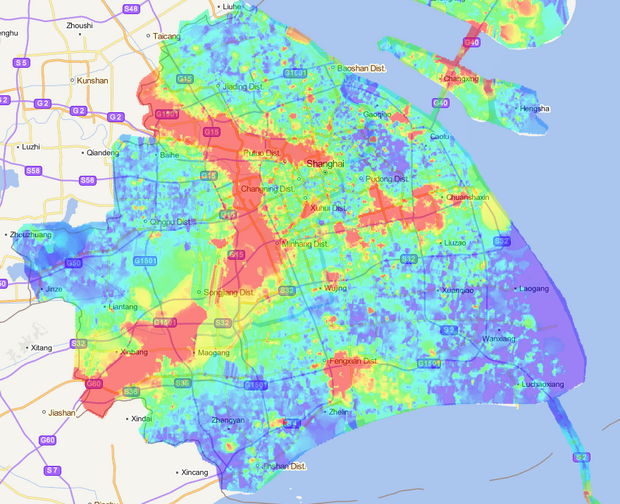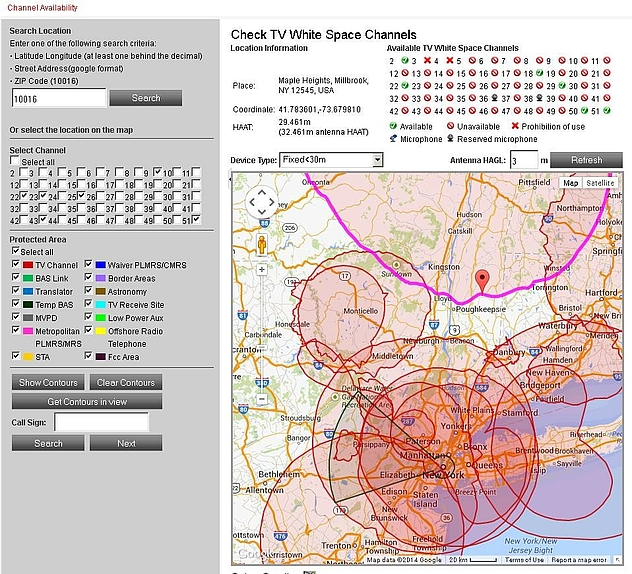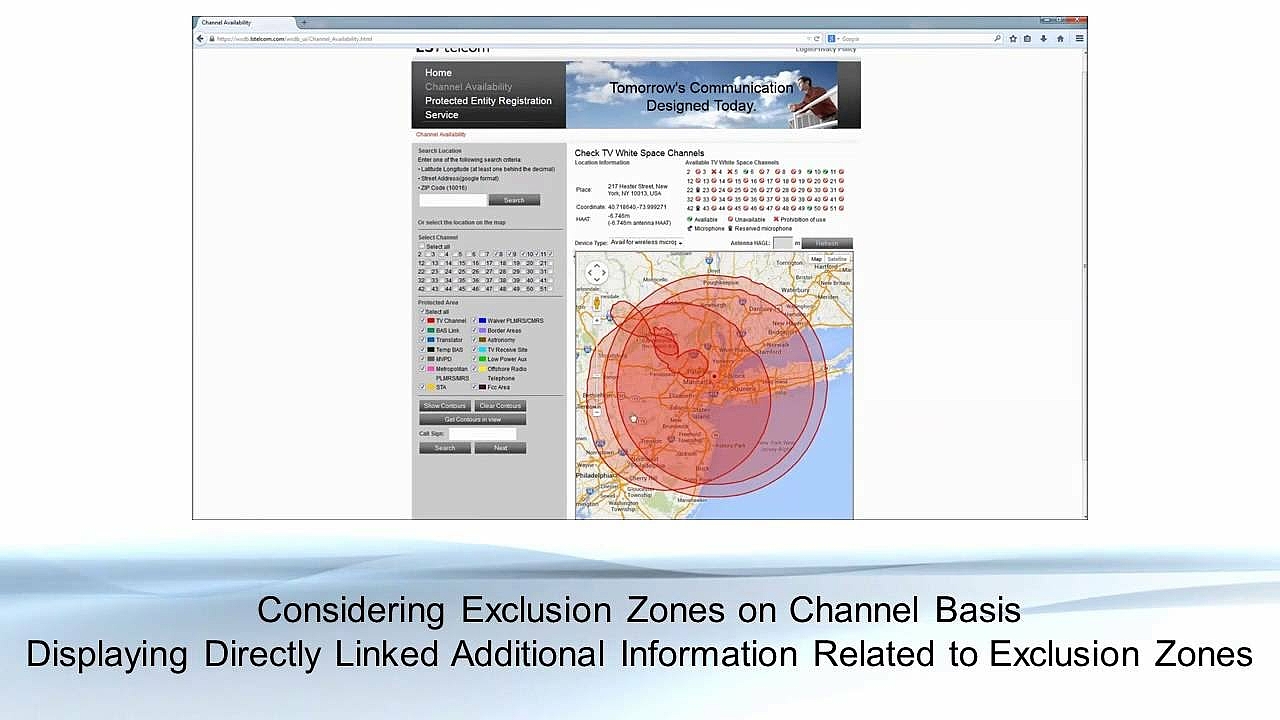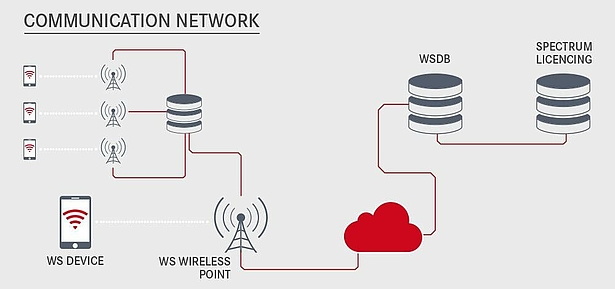Given the growing demand on the limited resource that is the radio spectrum, regulators are looking at increasingly sophisticated ways to find opportunities for sharing between users. Despite terms such as Dynamic Shared Access (DSA) and Licensed Share Access (LSA), most of the regulatory tools being used to encourage greater access to spectrum through sharing remain, primarily, command-and-control based. They rely, for example, on calculating spectrum availability using algorithms based on tightly defined spectrum planning rules. In DSA, a database of existing spectrum use is used to dictate whether a particular frequency can be used at a specific location, based on a set of pre-determined compatibility criteria aimed at protecting the incumbent service from interference. The algorithms may include propagation calculations based on topographical and geographical data, but even using such mechanisms does not provide an accurate picture of the sharing environment due to the uncertainties of propagation prediction, the granularity and accuracy of terrain data, and any inaccuracies in the database of existing users and services.
Compatibility criteria used in such calculations rely on an assumption about the service which is to share spectrum with the incumbent user and these are typically defined in terms of transmitter power and occupied bandwidth. They do not take into account the ability of modern, software defined radio devices to transmit signals which can be specifically tailored to the environment in which they find themselves, modifying their spectral occupancy to fit around any signals to which no interference should be caused.
Difficulties in Current Sharing Mechanisms
An overview
Whilst using an occupied channel may be sub-optimal compared to using one that is relatively clear of interference, this does demonstrate the fact that there are opportunities for sharing spectrum, even in existing and heavily occupied bands, without causing interference which would in any way impact incumbent users, if sufficient knowledge of the sharing system and the use of the incumbent service is known.
In addition, all propagation models are predictions only, and it may well be that in some areas, where over-cautious protection criteria have been used to calculate compatibility, there are missed opportunities to use the spectrum caused by specific local factors. These might be topographical (i.e. buildings which cause a shadow that are not accurately captured by the model), temporal (i.e. a large vehicle parking in a position which blocks radio signals), or even due to errors in the data input into the compatibility model (incorrect locations or planned powers being used instead of actual power transmitted).
Smart Solutions for Sharing the Spectrum
There are two stages in the process of enabling shared access to spectrum whilst also increasing the accuracy of knowledge concerning the radio environment:
For this stage, we provide our monitoring tool LS OBSERVER. It consists of smart software and hardware able to capture the entire spectrum of Interest with an ultra-fast high-performance embedded receiver technology. LS OBSERVER can provide valuable information on spectrum use and provides with its rich hardware portfolio with fixed and mobile units a high flexibility in how the data is captured.
For the second stage, LS telcom includes in its LS OBSERVER system a sophisticated storage concept. All remote monitoring units of LS OBSERVER whether if it is a fixed, mobile or portable unit include a large internal storage space. By this the individual LS OBSERVER unit is able to capture the entire relevant frequency range permanently on a 24/7 basis without the need for a connection to a remote server. Everything is stored locally and can be downloaded later by the operator via the network or a direct access. With the LS OBSERVER CMS software the operator does not need to download always the entire recording. Thanks to sophisticated search filters he can download only the portion he needs for his analysis. Further LS OBSERVER automatically can produce aggregated or compressed data which need less storage space and are easier to handle.
Identifying sharing opportunities could therefore be achieved in a highly detailed way through a network of LS OBSERVER RMUs, ideally mobile, collecting and storing data on spectrum use. This data can be fused together with licensing information (transmitter location and powers), data from traditional fixed monitoring stations, and terrain and topographical data to provide ‘heat maps’ of spectrum usage.
Big Data and Data Mining for Spectrum Sharing Success
The SpectrumMap
This is what LS telcom has achieved with its SpectrumMap. The SpectrumMap software allows the input of a wide range of different data sources concerning spectrum use from different types of sensors and detectors as well as license databases and existing coverage maps.
As an example of the way in which this data is intelligently processed, drive test data tends to show signal levels at specific points on specific streets at a specific point in time. However fused with a suitable propagation model and geographic and topographic data, this can be extended to a full coverage map, by intelligently interpolating between the measurements. This is illustrated in the figures below. This approach is far more accurate than just straightforward interpolation, and as more data is received either from drive tests or other sources, the accuracy of the resulting map will increase further.
The fusing of such data can be used for an extremely wide variety of regulatory analyses including:
- Identification of unused frequencies, or areas of ‘white space’
- Occupancy or coverage of a particular frequency
- Occupancy or coverage of a particular set of frequencies (such as those belonging to a particular mobile operator) to identify, for example, coverage ‘not spots’
- Comparative coverage of frequency bands of different networks to assess which provides the best signal
- Channel occupancy or channel loading of a network
- Mapping WiFi and ‘licence exempt’ spectrum usage
- Pinpointing of unlicensed and illegal frequency usage, for example:
- by comparing the licence database with the measured signals or
- by detecting signals which exceed their predicted level based on their licence parameters
- Validating and calibrating coverage prediction models with real-world measurements
- Checking the EM environment for potential infringements of EMF limits
- Comparison of daily or hourly spectrum usage, to determine times of peak demand
In Shanghai, LS telcom’s team fitted RF monitoring sensors and recorders to the city’s garbage trucks. These vehicles visit nearly every road in the city and thus provide extensive information on spectrum usage, enabling all of the benefits identified above.
The capture, storage and mining of big data such as has been implemented in LS telcom’s SpectrumMap has innumerate applications for improving knowledge of the use of the spectrum, and thereby opening up opportunities for greater sharing, and more efficient utilisation whilst protecting incumbent services and minimising incoming and outgoing interference.
Dynamic Spectrum Access / Whitespace Spectrum Management
Learn more about the practical use of our smart software solutions
LS telcom’s whitespace management system for the FCC
If your whitespace distribution framework or policy is not crystal clear yet - why not ask for an expertise by our consultants? They have worked on many whitespace use cases already and can share their experience with you.
Location and Database related Dynamic Spectrum Access
Watch the video about our TV Whitespace Testbed in the U.S.
Read more about Dynamic Spectrum Access and Whitespace Spectrum Management
Get the Details about the Smart Spectrum Management Solutions
- The whitespace management database (WSDB), which includes the whitespace spectrum assignments, registration and authorization
- The spectrum license database, including spectrum license data of incumbent users and protected spectrum
- Infrastructure with a large number of access points
- And the consumer access devices
You can choose the payment model and online payment option you prefer. Of course, the system provides the necessary control and speed for the high volume access requests to the database.
- The user of a whitespace device requests access to the whitespace database
- The user is registered and access is provided and authorized
- The user can then make a request for available whitespace channels
- Available channels are assigned and authorized
There are periodic updates and control messages between the whitespace database and the spectrum license database to guarantee interference-free use of all frequencies.



